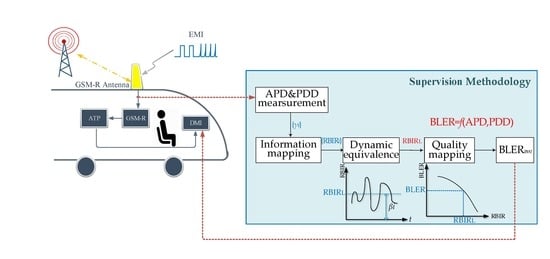A Method to Supervise the Effect on Railway Radio Transmission of Pulsed Disturbances Based on Joint Statistical Characteristics
Abstract
1. Introduction
2. Problem Formulation
2.1. Supervising Methodology of RSTT
2.2. MI-Based Method to Evaluate the Impact on RSTT of Time-Varying Interference
3. Information Mapping of Encoded Radio Transmission under Time-Varying Disturbance
3.1. Information Mapping Based on MI-ESM
3.2. Long-Term Coded RBIR under Time-Varying Disturbance Based on Nonlinear Optimization
4. Impact on Encoded RSTT under Pulsed Disturbances in HSR Environment
- Case Tp ≈ Q
- 2.
- Case Tp >> Q
- 3.
- Case Tp << Q
5. Simulation and Discussion
- The radio transmission is established in the MATLAB (MathWorks, Natick, Massachusetts, USA, version R2016b) simulation platform of the computer, as well as the performance evaluation based on statistics;
- The EM disturbance is generated by the National Instruments (NI) NI-5793 radiofrequency transmitter (National Instruments, Austin, Texas, USA) adapter module, which can generate arbitrary waveform;
- The EMI receiver is built on NI FlexRIO architectures, composed of PXIe-1082 chassis, NI 5792 radiofrequency receiver adapter module, PXIe-7966R FPGA module and PXIe-8135 PXI Controller.
6. Conclusions
Author Contributions
Funding
Acknowledgments
Conflicts of Interest
References
- ITU. ITU-R M.2418-0 Description of Railway Radiocommunication Systems between Train and Trackside (RSTT); ITU: Geneva, Switzerland, 2017. [Google Scholar]
- UIC GSM-R Operators Group, UIC Code 951. GSM-R System Requirements Specification (SRS). In UIC Eirene Technology Report, Version 15.3.0; UIC: France, Paris, 2012. [Google Scholar]
- He, R.; Ai, B.; Wang, G.; Guan, K.; Zhong, Z.; Molisch, A.F.; Briso-Rodriguez, C.; Oestges, C.P. High-Speed Railway Communications: From GSM-R to LTE-R. IEEE Veh. Technol. Mag. 2016, 11, 49–58. [Google Scholar] [CrossRef]
- Pawlik, M.; Siergiejczyk, M.; Gago, S. European rail transport management system mobile transmission safety analysis. In Risk, Reliability and Safety: Innovating Theory and Practice; Walls, L., Revie, M., Bedford, T., Eds.; CRC Press: London, UK, 2017; pp. 1791–1794. [Google Scholar]
- RAIB. RAIB Report 11/2017 Derailment due to a Landslip, and Subsequent Collision; RAIB: Watford, UK, 2017.
- Johnsen, S.O.; Veen, M. Risk assessment and resilience of critical communication infrastructure in railways. Cognit. Technol. Work 2013, 15, 95–107. [Google Scholar] [CrossRef]
- EU. 2012/88/EU Commission Decision of 25 January 2012 on the Technical Specification for Interoperability Relating to the Control-Command and Signalling Subsystems of the Trans-European Rail System (Notified under Document C(2012) 172); Publications Office of the EU: Luxembourg, 2012. [Google Scholar]
- Ma, L.; Wen, Y.; Marvin, A.; Karadimou, E.; Armstrong, R.; Cao, H. A Novel Method for Calculating the Radiated Disturbance from Pantograph Arcing in High-Speed Railway. IEEE Trans. Veh. Technol. 2017, 66, 8734–8745. [Google Scholar] [CrossRef]
- UIC. 8736-2.0 Assessment Report on GSM-R Current and Future Radio Environment; International Union of Railways: Paris, France, 2014. [Google Scholar]
- Dudoyer, S.; Deniau, V.; Slimen, N.; Adriano, R. Susceptibility of the GSM-R transmissions to the railway electromagnetic environment. In Signalling and Security in Railway; Perpinya, X., Ed.; IntechOpen: London, UK, 2012; pp. 503–522. [Google Scholar]
- RAIB. RAIB Report 29/2014 Unauthorised Entry of a Train onto a Single Line at Greenford; RAIB: Watford, UK, 20 March 2014.
- UIC. UIC O-8740 Report on the UIC Interference Field Test Activities in UK; UIC: France, Paris, 2013. [Google Scholar]
- Dudoyer, S.; Deniau, V.; Ambellouis, S.; Heddebaut, M.; Mariscotti, A. Classification of Transient EM Noises Depending on their Effect on the Quality of GSM-R Reception. IEEE Trans. Electromagn. Compat. 2013, 55, 867–874. [Google Scholar] [CrossRef]
- Pous, M.; Azpúrua, M.A.; Silva, F. Measurement and Evaluation Techniques to Estimate the Degradation Produced by the Radiated Transients Interference to the GSM System. IEEE Trans. Electromagn. Compat. 2015, 57, 1382–1390. [Google Scholar] [CrossRef]
- Du, H.; Wen, C.; Li, W. A new method for detecting and early-warning in-band interference of the GSM-R network. In Proceedings of the IEEE 17th International Conference on Communication Technology (ICCT), Chengdu, China, 27–30 October 2017; pp. 800–804. [Google Scholar]
- International Electrotechnical Commission. CISPR 11:2015/AMD2:2019 Amendment 2, Industrial Scientific and Medical Equipment—Radio-Frequency Disturbance Characteristics—Limits and Methods of Measurement; International Electrotechnical Commission: Geneva, Switzerland, 2019. [Google Scholar]
- International Electrotechnical Commission. CISPR 16-1-1:2019 Specification for Radio Disturbance and Immunity Measuring Apparatus and Methods—Part 1-1: Radio Disturbance and Immunity Measuring Apparatus—Measuring Apparatus; International Electrotechnical Commission: Geneva, Switzerland, 2019. [Google Scholar]
- Matsumoto, Y.; Gotoh, K. An Expression for Maximum Bit Error Probability Using the Amplitude Probability Distribution of an Interfering Signal and Its Application to Emission Requirements. IEEE Trans. Electromagn. Compat. 2013, 55, 983–986. [Google Scholar] [CrossRef]
- Matsumoto, Y.; Wiklundh, K. Evaluation of Impact on Digital Radio Systems by Measuring Amplitude Probability Distribution of Interfering Noise. IEICE Trans. Commun. 2015, 98, 1143–1155. [Google Scholar] [CrossRef]
- Geng, X.; Wen, Y.; Zhang, J. An APD-Based Evaluation on the Effect of Transient Disturbance over Digital Transmission. Chin. J. Electron. 2020, 29, 57–65. [Google Scholar] [CrossRef]
- Tengstrand, S.Ö.; Axell, E.; Fors, K.; Linder, S.; Wiklundh, K. Efficient evaluation of communication system performance in complex interference situations. In International Symposium on Electromagnetic Compatibility; IEEE: Angers, France, 2017; pp. 1–6. [Google Scholar]
- Eliardsson, P.; Axell, E.; Komulainen, A.; Wiklundh, K.; Tengstrand, S.Ö. A Practical method for BEP estimation of convolutional coding in impulse noise environments. In Proceedings of the IEEE Military Communications Conference, Norfolk, VA, USA, 12–14 November 2019; pp. 1–6. [Google Scholar]
- Wiklundh, K.C. An approach to using amplitude probability distribution for emission limits to protect digital radio receivers using error-correction codes. IEEE Trans. Electromagn. Compat. 2010, 52, 223–229. [Google Scholar] [CrossRef]
- Ma, L. The Radiated Characteristics of Pantograph Arcing in High-Speed Railway. Ph.D. Thesis, Beijing Jiaotong University, Beijing, China, 2017. [Google Scholar]
- Midya, S.; Bormann, D.; Mazloom, Z.; Schutte, T.; Thottappillil, R. Conducted and radiated emission from pantograph arcing in AC traction system. In Proceedings of the IEEE Power & Energy Society General Meeting, Calgary, AB, Canada, 26–30 July 2009; pp. 1–8. [Google Scholar]
- Hammi, T.; Slimen, N.B.; Deniau, V.; Rioult, J.; Dudoyer, S. Comparison between GSM-R coverage level and EM noise level in railway environment. In Proceedings of the 9th International Conference on Intelligent Transport Systems Telecommunications, Lille, France, 20–22 October 2009; pp. 123–128. [Google Scholar]
- Lei, W.; Shiauhe, T.; Almgren, M. A fading-insensitive performance metric for a unified link quality model. In Proceedings of the IEEE Wireless Communications and Networking Conference, Las Vegas, NV, USA, 3–6 April 2006; pp. 2110–2114. [Google Scholar]
- Goldsmith, A. Wireless Communications, 4th ed.; Cambridge University Press: Cambridge, UK, 2005; pp. 214–244. [Google Scholar]
- Fabregas, A.; Caire, G. Coded modulation in the block-fading channel: Coding theorems and code construction. IEEE Trans. Inf. Theory 2006, 52, 91–114. [Google Scholar] [CrossRef]
- Goldsmith, A.; Medard, M. Capacity of Time-Varying Channels with Causal Channel Side Information. IEEE Trans. Inf. Theory 2007, 53, 881–899. [Google Scholar] [CrossRef][Green Version]
- Zummo, S.A. Coding and Channel Estimation for Block Fading Channels. Ph.D. Thesis, University of Michigan, Ann Arbor, MI, USA, 2003. [Google Scholar]
- Zhang, J.; Chen, S.; He, Q. An Estimation of Achievable Rate for Digital Transmissions over MIMO Channels. Commun. Netw. 2015, 7, 8–12. [Google Scholar] [CrossRef][Green Version]
- Zheng, H.; Wu, M.; Choi, Y.; Himayat, N.; Zhang, J.; Zhang, S.; Jalloul, L. Link performance abstraction for ML receivers based on RBIR metrics. In IEEE 802.16 Broadband Wireless Access Working Group; IEEE: Atlanta, GA, USA, 2007. [Google Scholar]
- Zhang, J. Research on Link Performance Cognition and Channel Status Information Feedback. Ph.D. Thesis, Beijing Jiaotong University, Beijing, China, 2009. [Google Scholar]
- Pan, J.; Li, W.; Xing, X. Optimally nonlinear weighting method for light-spot positioning. Opt. Tech. 2006, 5, 685–687. [Google Scholar]
- Zhang, J. Performance Analysis of Turbo Code in Frequency Hopping Communication and Realization in Wireless Communication System; Beijing University of Posts and Telecommunications: Beijing, China, 2018. [Google Scholar]
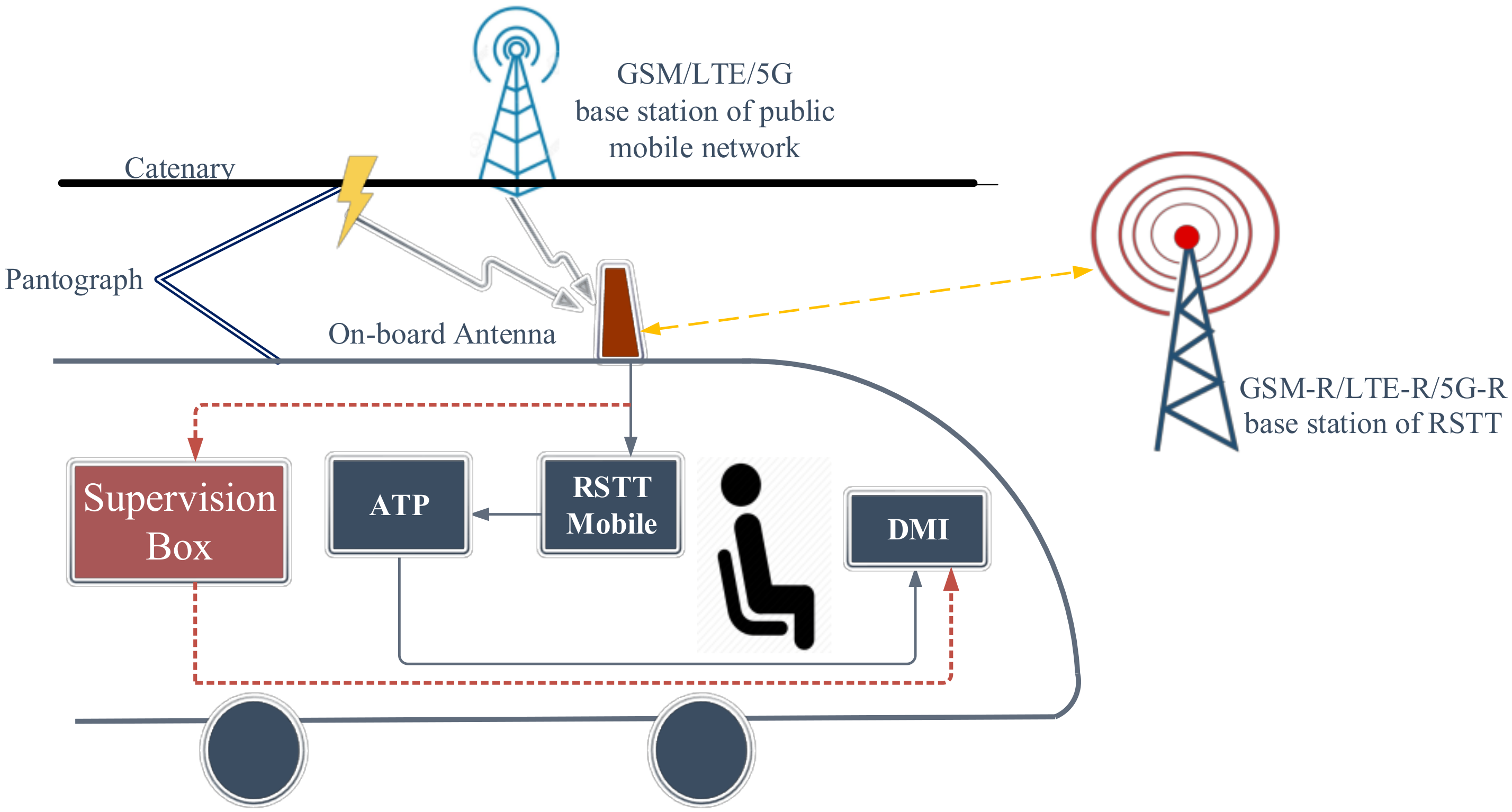
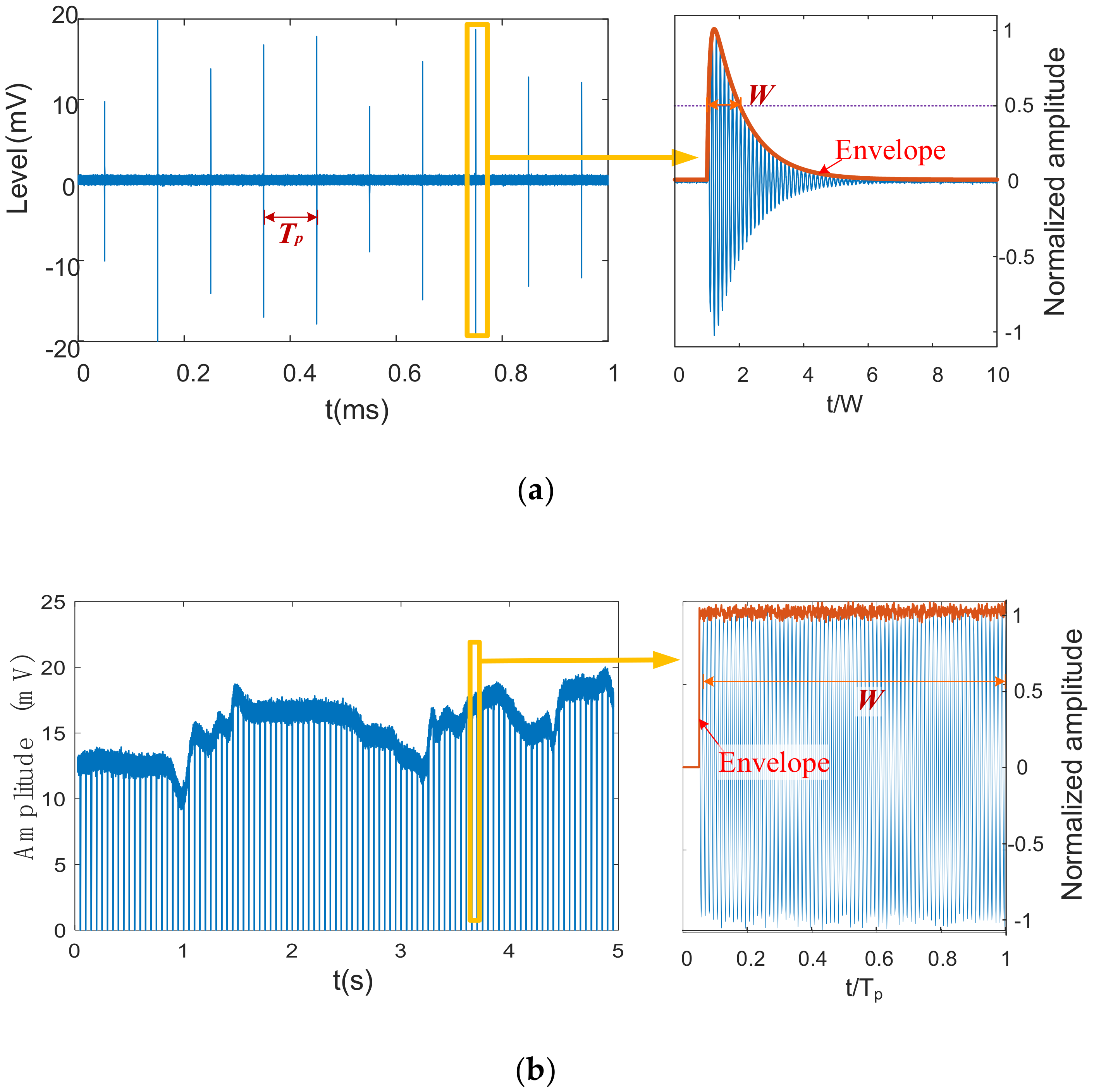
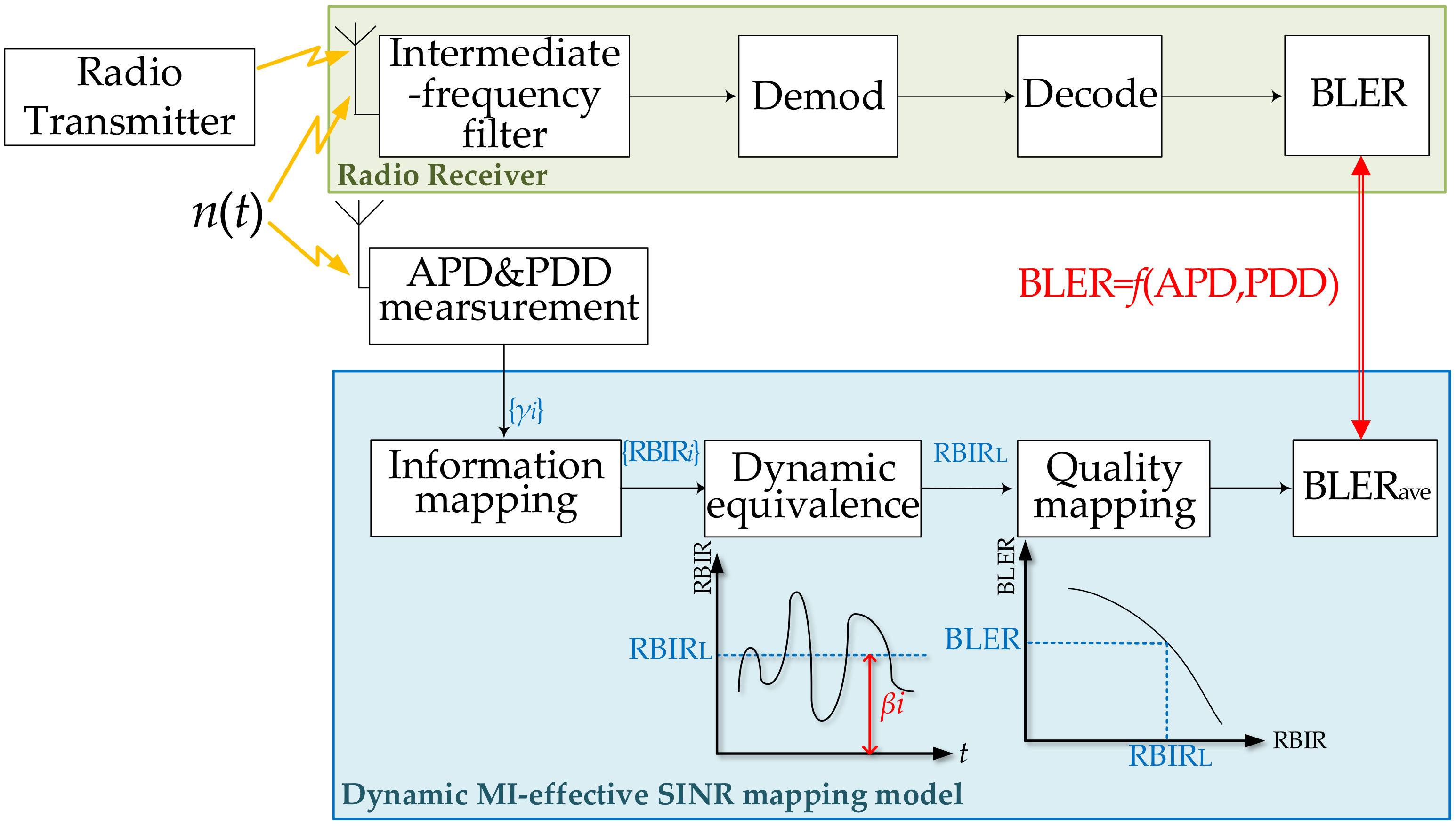

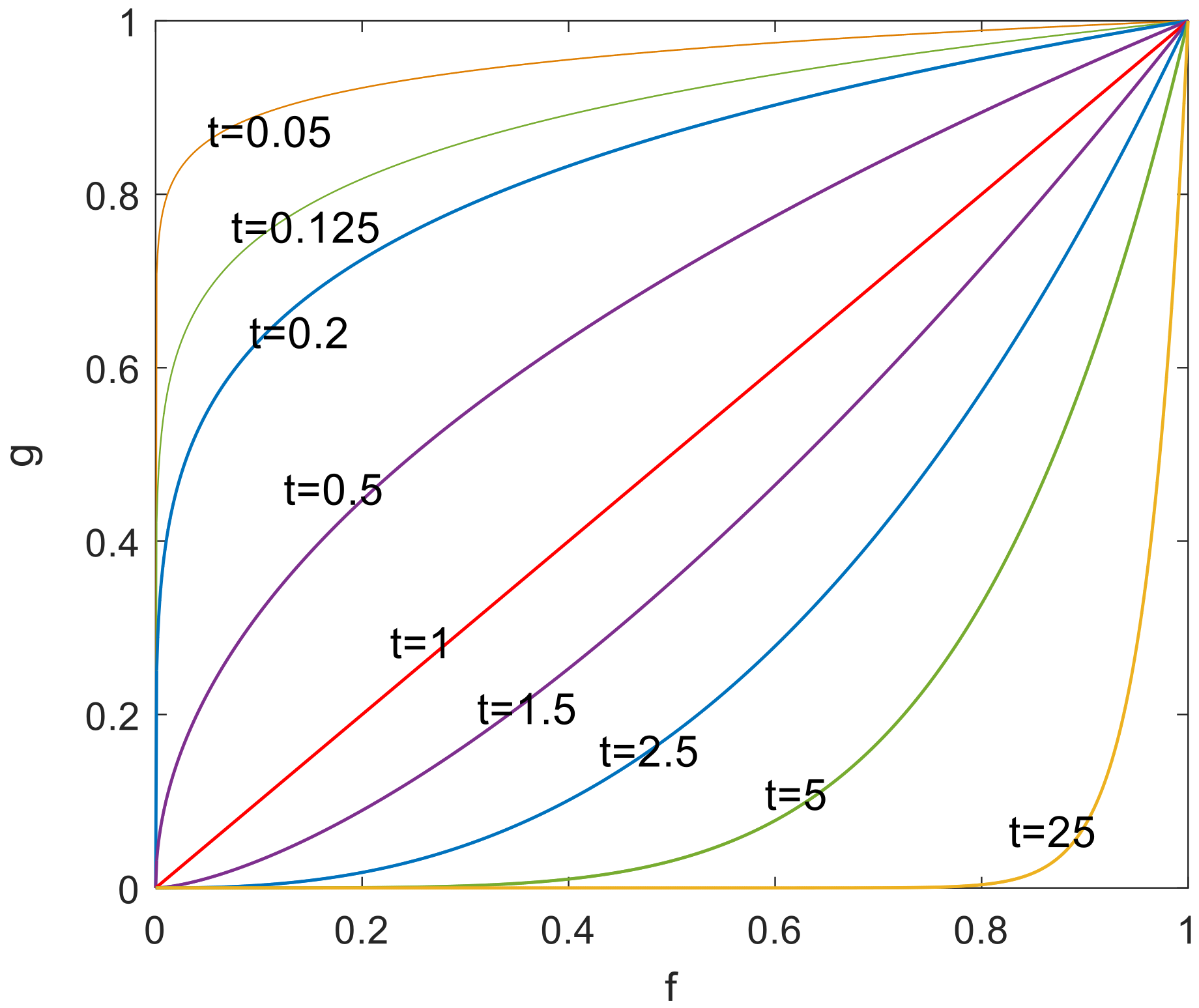
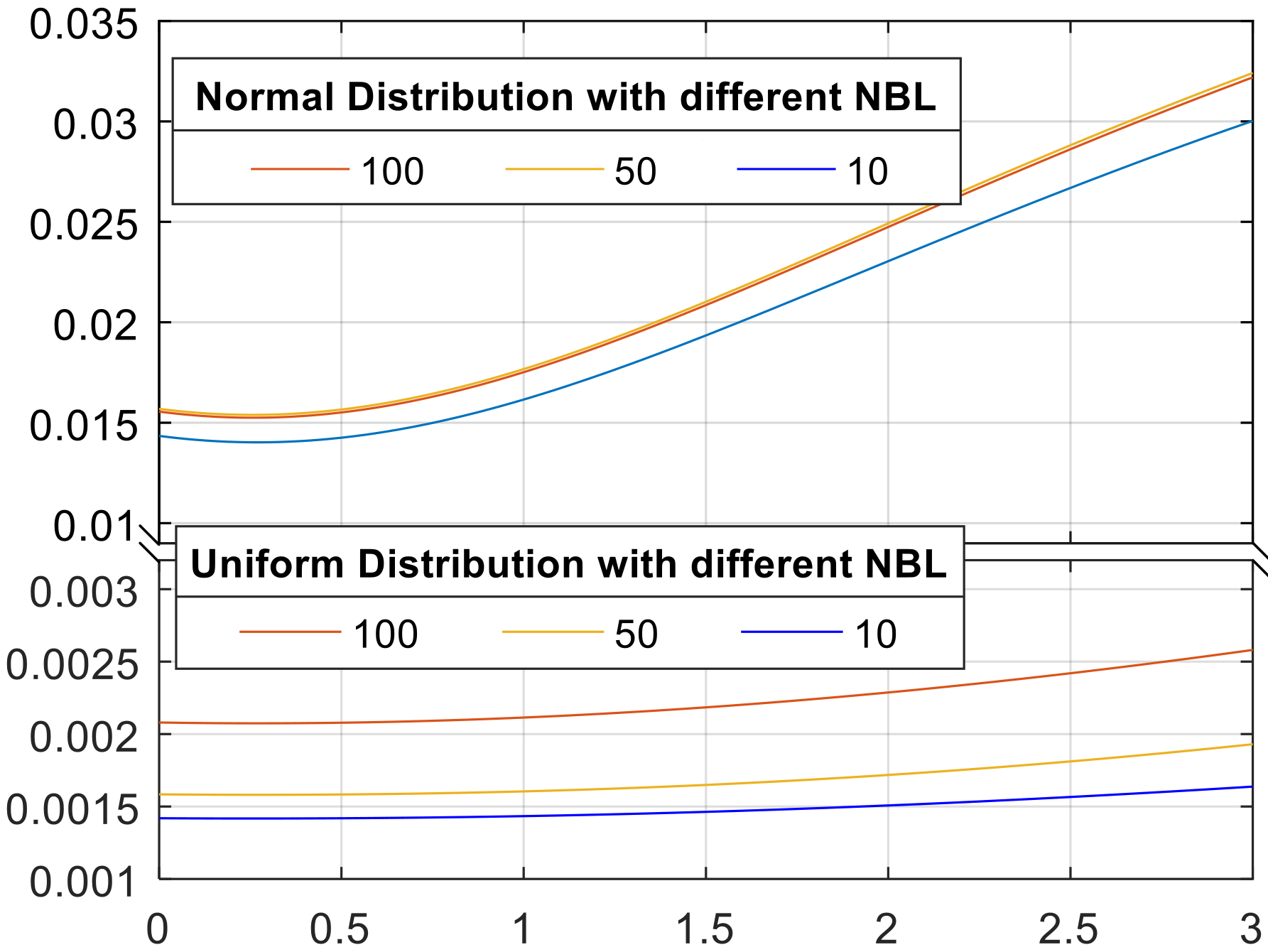
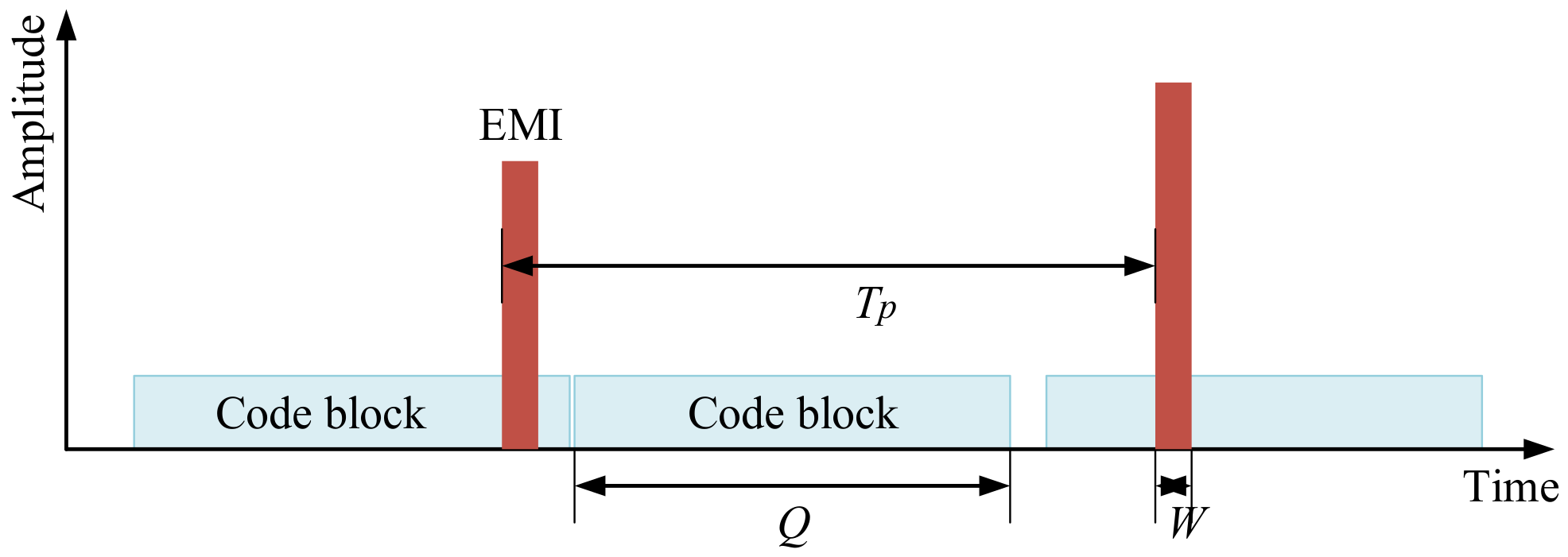
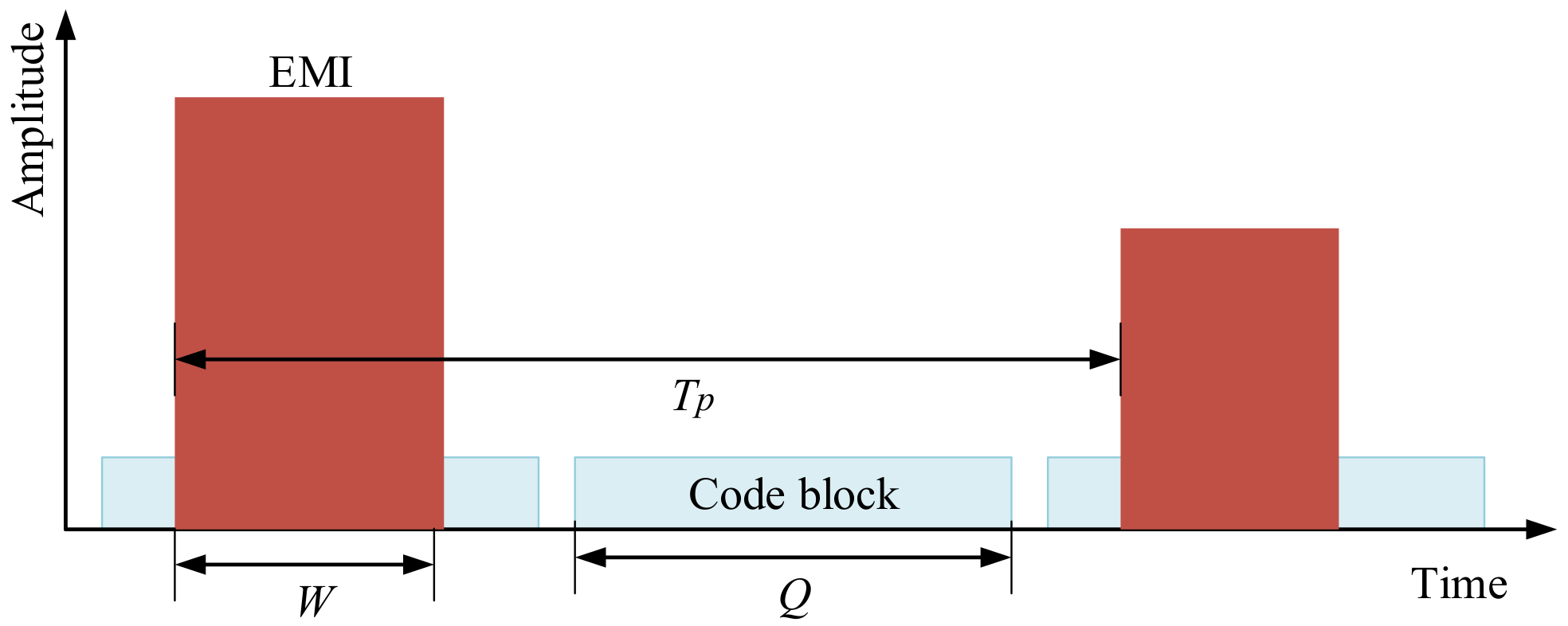
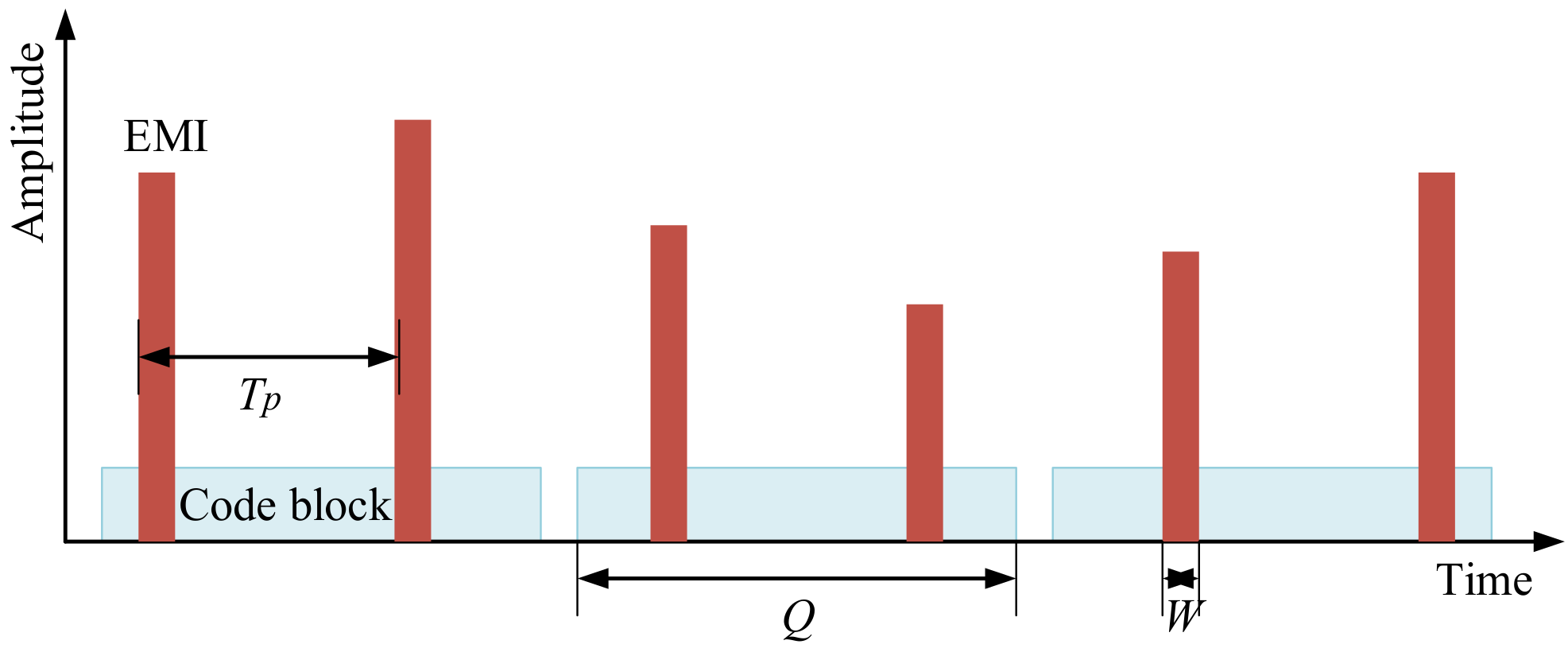
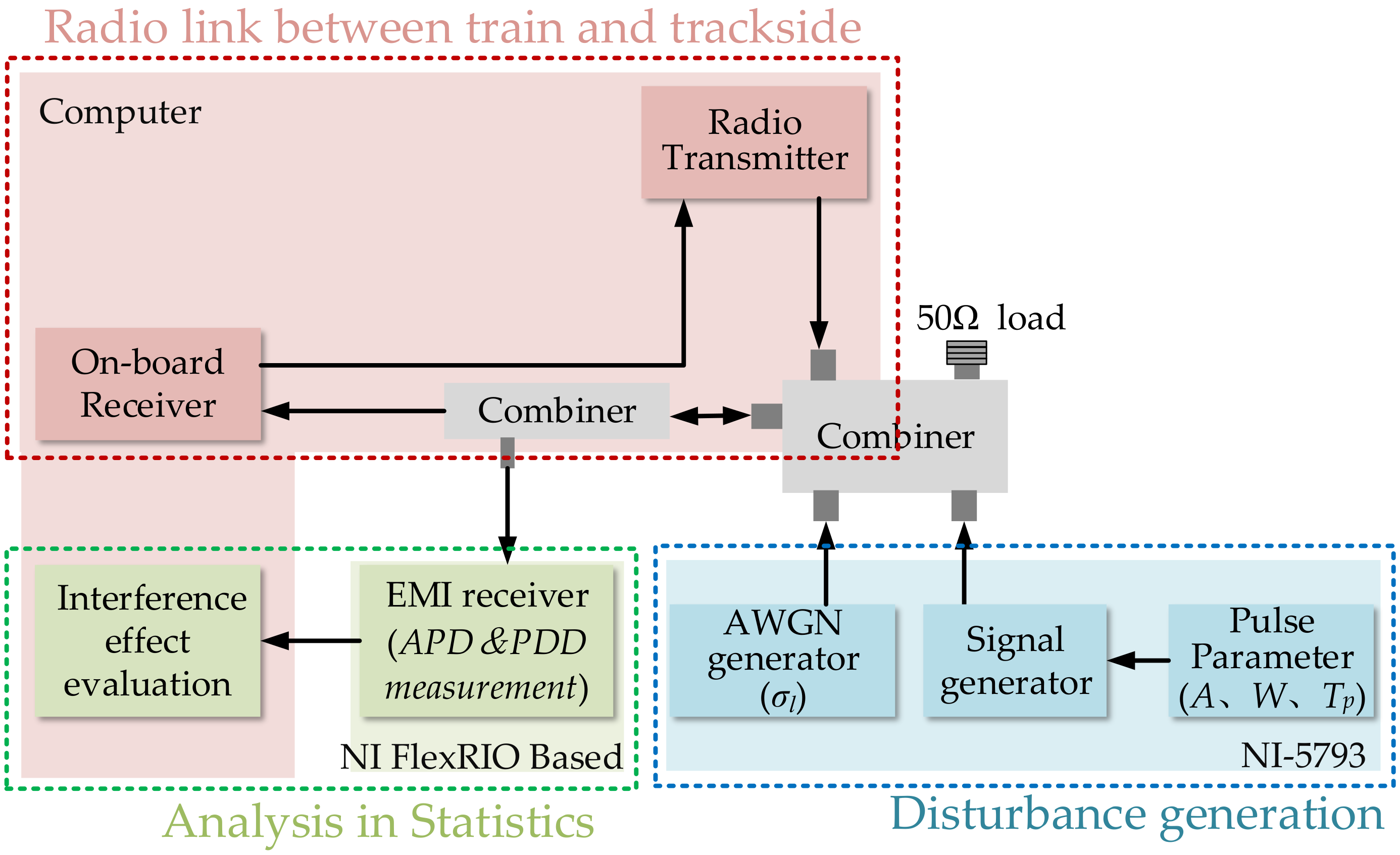
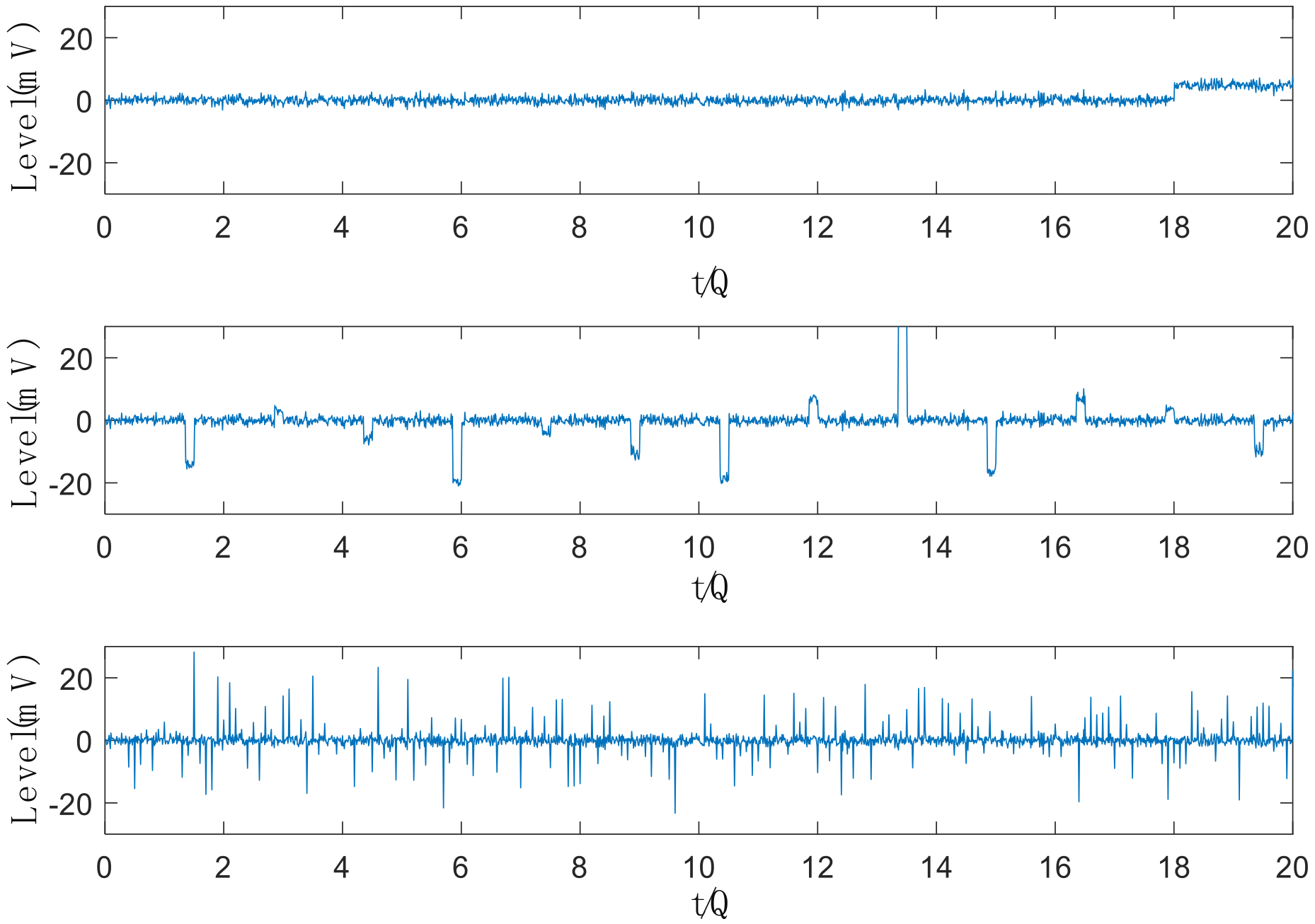
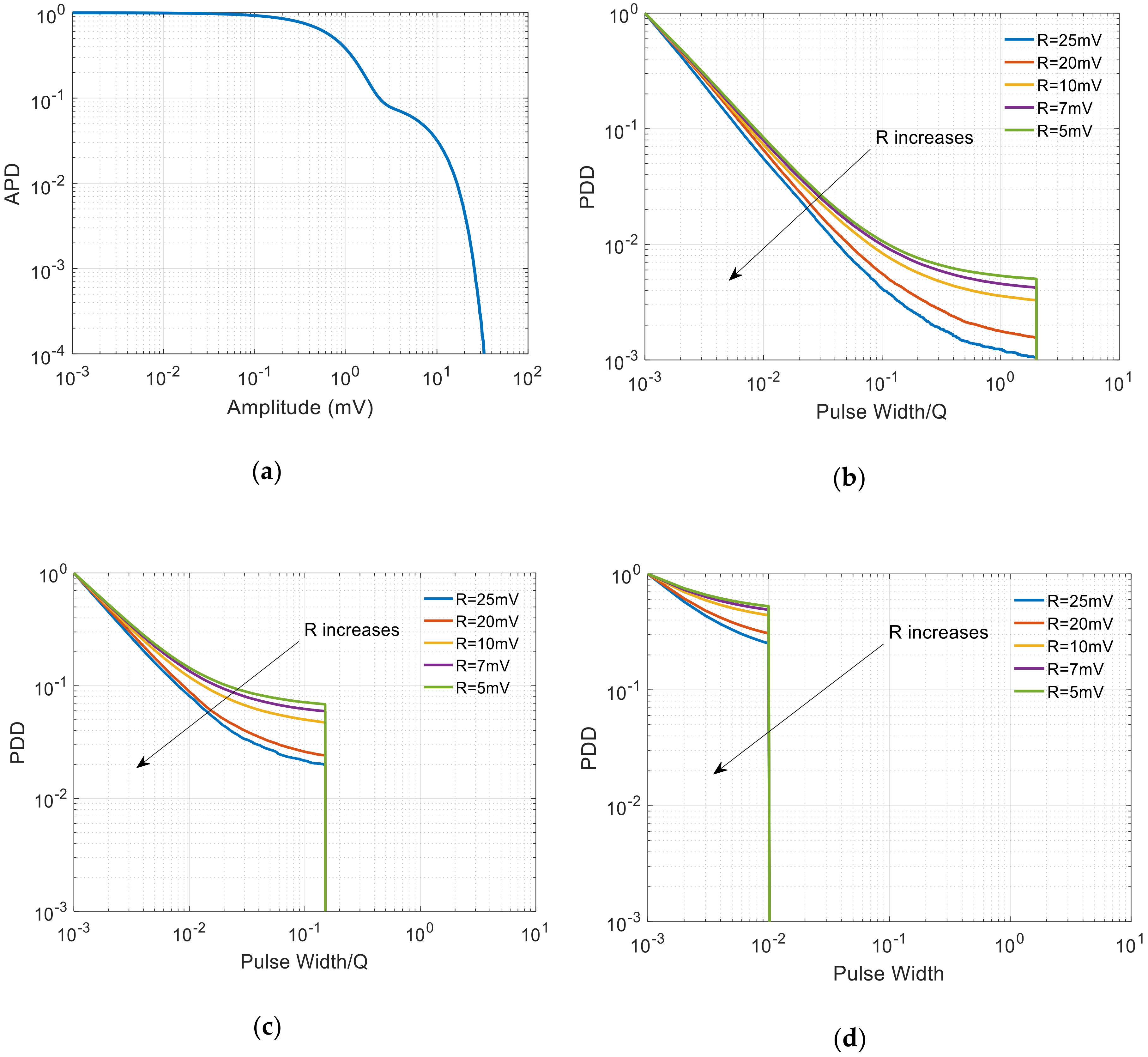
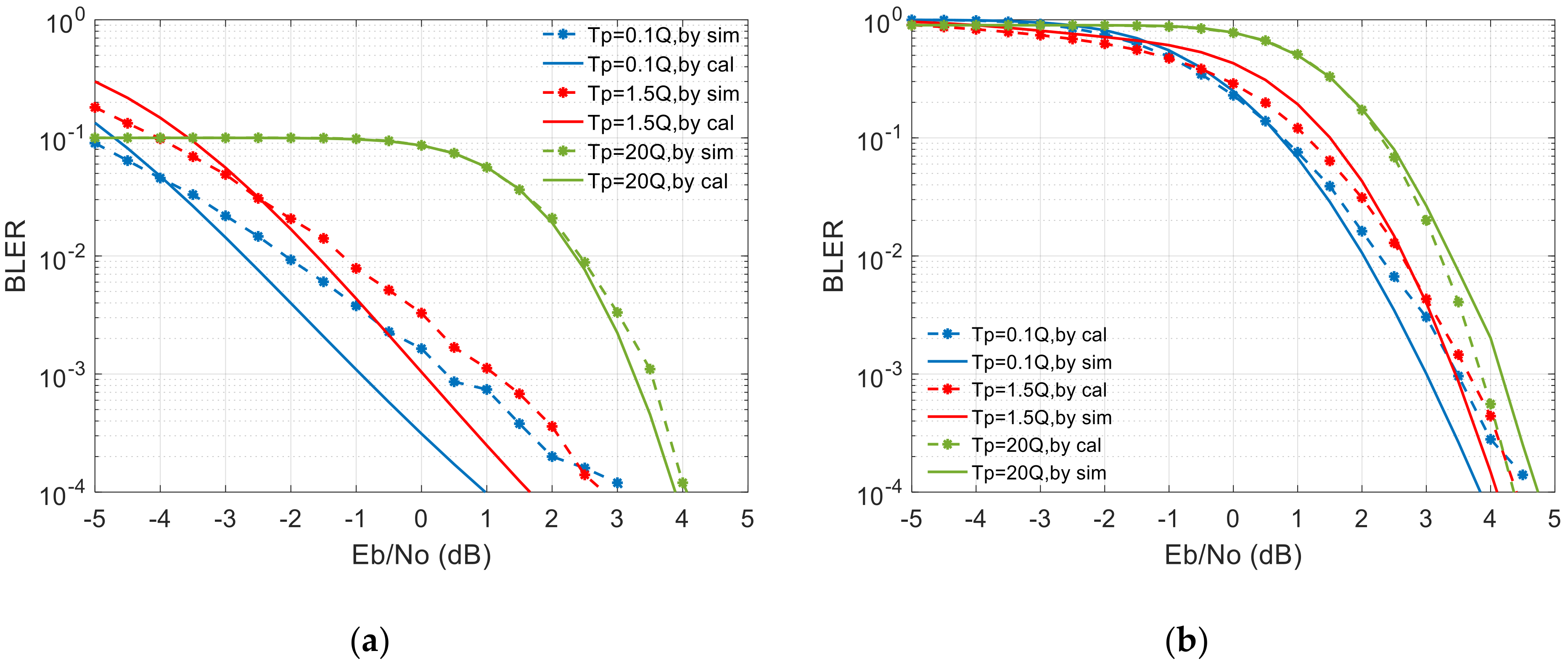
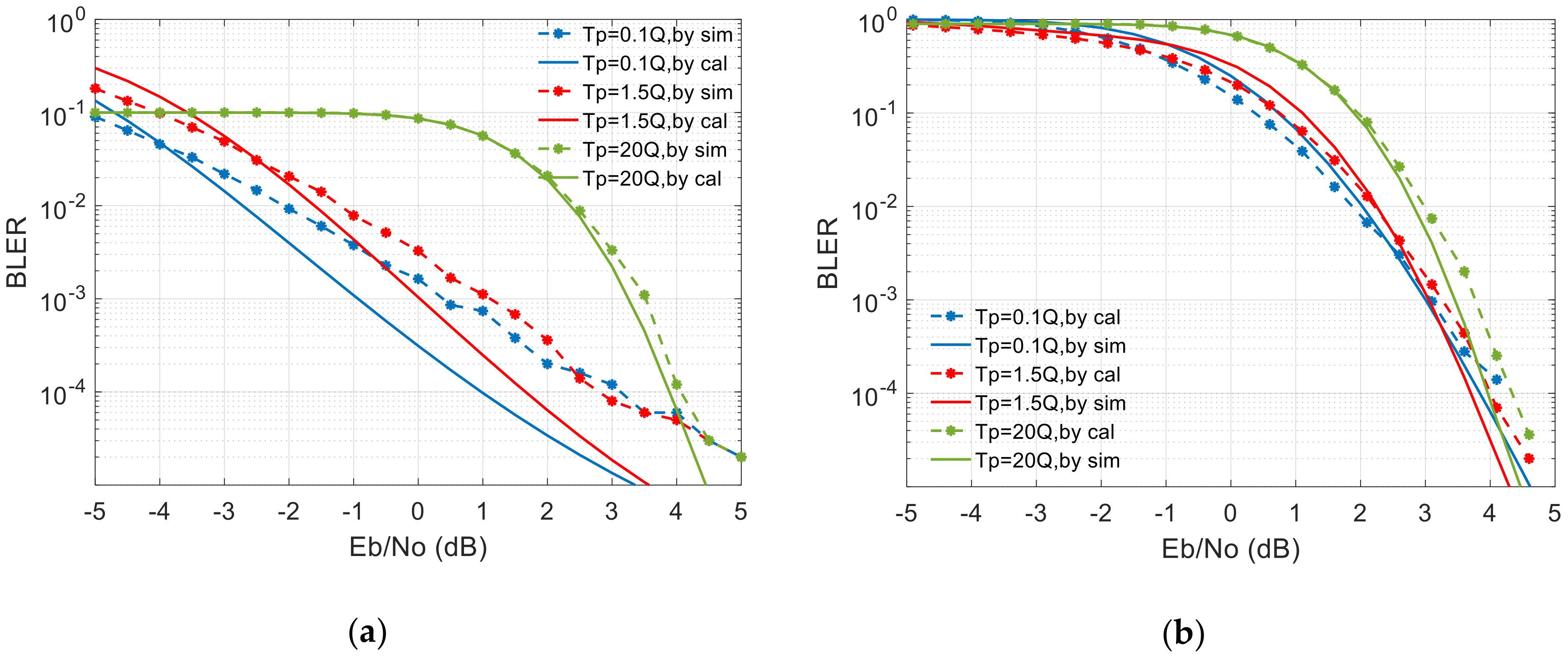
| Method to Monitor Interference | Modulation Scheme | FEC Coding Scheme | Impulsive Disturbance | Non-Impulsive Disturbance |
|---|---|---|---|---|
| Classification [7] | √ | √ | ||
| Instantaneous frequency histogram [15] | √ | √ | ||
| APD without ICF [14] | √ | √ | √ | |
| APD with ICF [17] | √ | √ | √ | |
| APD and PDD | √ | √ | √ | √ |
© 2020 by the authors. Licensee MDPI, Basel, Switzerland. This article is an open access article distributed under the terms and conditions of the Creative Commons Attribution (CC BY) license (http://creativecommons.org/licenses/by/4.0/).
Share and Cite
Geng, X.; Wen, Y.; Zhang, J.; Zhang, D. A Method to Supervise the Effect on Railway Radio Transmission of Pulsed Disturbances Based on Joint Statistical Characteristics. Appl. Sci. 2020, 10, 4814. https://doi.org/10.3390/app10144814
Geng X, Wen Y, Zhang J, Zhang D. A Method to Supervise the Effect on Railway Radio Transmission of Pulsed Disturbances Based on Joint Statistical Characteristics. Applied Sciences. 2020; 10(14):4814. https://doi.org/10.3390/app10144814
Chicago/Turabian StyleGeng, Xin, Yinghong Wen, Jinbao Zhang, and Dan Zhang. 2020. "A Method to Supervise the Effect on Railway Radio Transmission of Pulsed Disturbances Based on Joint Statistical Characteristics" Applied Sciences 10, no. 14: 4814. https://doi.org/10.3390/app10144814
APA StyleGeng, X., Wen, Y., Zhang, J., & Zhang, D. (2020). A Method to Supervise the Effect on Railway Radio Transmission of Pulsed Disturbances Based on Joint Statistical Characteristics. Applied Sciences, 10(14), 4814. https://doi.org/10.3390/app10144814






